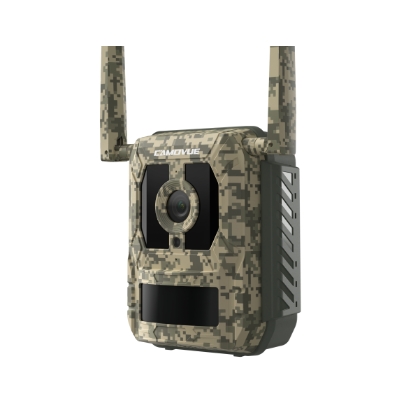Game cameras—people also call them trail cameras or scouting cameras—let hunters and nature lovers see what moves in the woods when no one is around. They capture photos or video the instant a deer slips past or a bobcat investigates a new path.
Best cheap trail cameras handle heat, rain, and long nights without complaint. But prices range from bargain to eye-watering. This guide focuses on the best budget game camera options. We dig into what “budget” really means, which features matter most, and which models give strong performance without draining your wallet.
What Does “Budget” Mean for Game Cameras?
When someone hears “budget,” the first thought is money. That is true, yet the number itself can shift. A budget bowhunter setting up ten cameras might call anything under $100 a saver.
A land manager who needs cellular alerts and cloud storage may stretch “budget” to $150–200 because the added service saves fuel and time over months. So, budget is not one fixed price tag; it is a realistic ceiling that still meets core field needs.
What To Look for in the Best Budget Trail Camera?
A low sticker does not equal a solid value. Some cheap units miss key features like fast triggering or crisp night shots. Below are the elements that separate a best low-budget game camera from a drawer full of regrets.
Trigger speed
A slow trigger means the animal is gone before the shutter fires. Look for 0.2 to 0.4-second trigger speed on still shots. At this range, a deer walking across a trail will land near the middle of the frame, not at the edge. Video often triggers a hair slower, but anything over half a second feels laggy.
A fraction might not sound big, yet at dawn when elk slip through dense cover, that sliver of time counts. Oddly, on very active bait sites, a slightly slower speed can reduce hundreds of near-identical files, so blazing speed is not always vital there—one of many tiny trade-offs that make camera work an art as well as a science.
Detection range
Detection range is how far the camera’s sensor “sees” heat or motion. Standard budget models reach 50–70 feet in open air. Premium units stretch to 100 feet, but thick brush cuts all ranges. Match range to site: on a narrow game trail 40 feet wide, extra distance offers little.
On a food plot, more range helps. Note too that detection range can differ from flash range, so a camera might sense a hog at 70 feet yet flash only to 60 feet, leaving a dark outline. Reading both numbers avoids surprises.
Flash type
Budget cameras use three flash styles:
- White LED: full-color night photos, but the bright burst can spook cautious animals.
- Low-glow infrared: faint red dots are visible if you stare at the lens, yet most games ignore them. Photos come out black-and-white.
- No-glow infrared (black flash): completely dark to both humans and wildlife; image quality sometimes nudges lower, especially in full darkness.
Most thrifty buyers choose low-glow. It balances price, brightness, and image clarity. White LEDs give the best color but seldom land in the budget aisle because they need stronger hardware.
Megapixel (MP) rating
Ads trumpet 24 MP, 32 MP, even 48 MP pictures. Beware digital interpolation: the sensor may shoot eight real megapixels, then the firmware upsizes the file. Judge by sensor size and sample photos, not the marketing math.
A true eight-to-twelve-megapixel sensor usually produces sharp, printable shots. Higher MP counts do help with cropping, but storage fills faster. On budget cameras, pushing megapixels sometimes steals power from night flash or slows the processor, so balance matters.
Night vision capabilities
Night vision stems from a mix of flash strength, shutter speed, and sensor sensitivity. A strong flash with a long exposure gathers more light yet blurs motion; a brief exposure freezes movement but looks darker.
Starlight night vision, a newer tech, draws extra light from faint moon glow without long exposures. It now appears in mid-priced units and even in one standout budget pick below. Check sample images if the seller provides them. You want details on animal faces, not ghost silhouettes.
Battery life
Budget games are lost when batteries die in a week. Lithium AA cells last the longest, yet cost more. Consider cameras that shoot 10,000 images or six months per set of alkalines. Cold climates drain batteries faster.
Solar panels cut battery cost, but the add-on may eclipse the base camera price. Choose a model with efficient sleep circuits and the option for external power so you can upgrade later.
Memory/storage
Most cameras use standard SD or micro-SD cards up to 32 GB or 128 GB. Bigger cards hold more video but cost more and write more slowly. A camera that overwrites the oldest files once full avoids lost shots.
If you plan to leave a unit in the field for months, make sure the firmware supports overwriting or add a large card. Cellular cameras that auto-upload need less local storage; they may work fine with a small card only for backup.
Best Low Budget Game Camera – Camovue Talon Pro
The Camovue Talon Pro gives hunters premium tools at a price that stays within reach. It's 4 K sensor pairs with 4G LTE live view, so you can check a feeder or game trail from your phone instead of driving out to the woods.
Starlight night vision lifts clear images from faint moonlight, and the no-glow flash keeps deer calm. Smart detection sorts shots by species, cutting down on empty frames and wasted data, while the sub-0.3-second trigger snaps clean, centered photos before a buck slips by.
Setup is fast: mount the rugged, weather-sealed case, insert a SIM, and choose a data plan only for the months you need. A single set of lithium AAs powers months of field time, and an external port lets you add a solar panel later.
4K 4G LTE Game and Trail Camera with Live View & Starlight Night Vision
4G LTE Live View, Starlight Night Vision in 4K UHD, Smart Detection & Species Recognition, Excellent Snapshot Performance.
List of Best Budget Cellular Trail Camera
Budget once meant “no cellular.” Now, entry models beam images to an app for the price of a good cooler. You still weigh data plans, but hardware costs keep dropping. Below is a short roster of cellular units that balance price with field success.
- Tactacam Reveal X-Gen 2.0 – Reliable trigger under half a second, simple app, and data that pauses off-season. Photo clarity is solid daylight, fair at night.
- Moultrie Mobile Edge – Built-in memory means no SD card fuss. Runs on AA or external power, and unlimited cloud storage holds every shot.
- Spypoint Link-Micro LTE – One of the smallest footprints, easy to hide. Ten-dollar monthly plan for 250 photos suits small properties.
- Bushnell CelluCORE 20 – Strong image sensor that keeps color true at dawn and dusk. Cell antenna swivels for the best signal. The menu is simple; no-glow flash hits 80 feet.
- Stealth Cam Muddy Manifest 24 – Good choice where long recovery time is fine. Sends 24-MP stills and 720p video, though the real sensor sits lower.
Are Best Value and Best Budget Trail Cameras the Same Thing?
“Budget” talks price first, performance second. “Value” balances the two. So the overlap is wide but not perfect. A camera at $60 that leaks water has a low price, yet poor value.
A $140 camera that nails focus, lasts three seasons, and saves three hundred miles of fuel by sending photos may cost more upfront, but delivers higher lifetime value.
FAQs
What is the best trail camera on a budget?
The answer depends on your top need. If you want live cellular video and smart filters for less than two hundred dollars, the Camovue Talon Pro stands out. If you need a string of basic units for a big property, a batch of low-glow non-cell cameras like the older Bushnell Trophy Cam still serves well and costs around eighty dollars each during sales. Think about whether you will drive to swap cards often. That single factor flips the winner.
What is the difference between a game camera and a trail camera?
Most people use the words as though they match. Strictly speaking, a trail camera hints at placement along travel routes, while a game camera highlights the target game animals. In stores, boxes carry both labels and share the same tech: a motion sensor, a lens, and a weather-tight case. So you can treat them as the same device.
Are game cameras worth it?
Yes, when used with clear goals. One camera can reveal travel times, buck ratios, or trespass issues that would take weeks of foot hours to learn. The upfront cost recovers through saved scouting trips and better stand placement.
Conclusion
Today, you can buy the best cheap trail camera that snaps crisp images, beams them to your phone, and keeps batteries alive until spring turkey season. Pick a model that aligns with those factors and your budget number. Then mount it tight, angle it low, and let the forest tell its story.
Have thoughts on these picks? Share your field notes and help other readers choose their next budget game camera.









